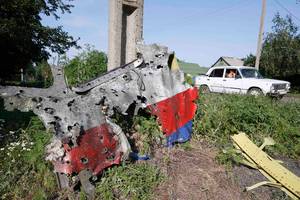The Crash of Malaysian Airlines MH17 : Unanswered Questions, One Year Later

Tears flowed freely at the memorial held in Kuala Lumpur on 11 July 2015 to remember the victims of the MH 17 tragedy — the Malaysian airline that was blown out of the skies a year ago on 17 July 2014. The tragedy remains deeply etched upon the collective memory of the Malaysian nation, as it continues to wrench the hearts of all those who lost their loved ones from so many different countries, notably the Netherlands and Australia.
The families of the victims from all these countries and indeed, people everywhere want those responsible for this heinous crime to be punished severely. They yearn for justice.
It was this desire for justice that prompted the Malaysian Government to distribute a draft resolution on 8 July 2015 among UN Security Council members which called for the establishment of an international tribunal to prosecute those responsible for the shooting of MH 17 over eastern Ukraine on 17 July 2014. The Malaysian resolution was co-sponsored by the Netherlands, Australia, Belgium and Ukraine. It was vetoed by Russia.
Why did Russia which was the first to release military monitoring data on the downing of the aircraft and which has consistently insisted that justice and truth should be upheld in the course of the investigation, choose to kill the move to establish a tribunal? Its Ambassador to the UN, Vitaly Churkin, argued that the results of the investigation should be finalized and the full report completed before a tribunal is set up. He did not want the tribunal to be manipulated to impede the goal of finding out who the actual culprits are.
A number of independent investigators agree with the Russian position. They have in fact gone even further and questioned the entire investigation partly because of the role of Ukraine in it. How can Ukraine which it is alleged by some quarters may have been complicit in the attack on the aircraft itself be part of the investigation? And worse, how can one expect the findings to be honest and unbiased when there is an agreement signed by four nations that are pivotal to the investigation, namely, Australia, Belgium, Netherlands and Ukraine, on 8 August 2014 that the results of the investigation can only be announced if they have the consent of all four parties ? Making unanimity among themselves a condition in effect gives Ukraine an effective veto over the decision-making process.
It has also been pointed out by one well-known investigative historian, Eric Zuesse, that the investigation has downplayed what he calls the “highest-quality item of evidence” available. The evidence he has in mind is the side-panel of the cockpit next to where the plane’s pilot was sitting. That side-panel “has an enormous gash shot through it — This gash is a few feet in diameter, and its ragged edge shows that it was caused not by a huge object like a cannonball but instead by a fusillade of much smaller projectiles that had been fired at the pilot and which ripped through the panel to his body, and killed him.” It lends weight to the view that a Ukrainian military jet(s) tracking MH 17 rather than a Buk System from the ground had shot the plane.
Zuesse and investigative journalists such as Robert Parry author of “MH-17 Case Slips into Propaganda Fog” (9 July 2015) and Christof Lehmann “MH17 — The Methodology of an international Cover-Up,” (3 July 2015) have become increasingly skeptical of the Dutch led investigation for yet another reason. All their attempts to obtain independent verifiable data have not been successful. These include requests for a certified copy of radar data released by the Russian Ministry of Defense, certified copies of communications between Ukrainian Air Traffic Controllers and the flight crew on board the ill-fated airline and the Comma Separated Variable (CSV) file from the plane’s flight data recorder. This lack of transparency creates serious doubts about the integrity of the investigation.
There is perhaps an even bigger problem. The investigation has not tried to link the tragedy to larger geopolitical issues. The critical question of who benefitted from the massacre in the skies has not been accorded much attention. And yet it is obvious that the massacre was used to not only demonize Russian President, Vladimir Putin, and thwart Russia’s political and military re-assertion but also to intensify sanctions against Russia. Before the 17th July massacre, European allies of the United States such as Germany, France, Netherlands and Italy were somewhat lukewarm about the US’s drive to widen and deepen sanctions against Russia. But after that dastardly episode, European public opinion changed dramatically. Because people were so incensed by the mass murder of innocent travelers which they blamed upon the Russian government, they were more than willing to endorse their governments’ imposition of sanctions against Russia.
Unless all these and other issues are addressed in the final report of the investigators, the truth about what really happened on 17 July 2014 will not be known. Justice will not be done to the victims of one of the greatest tragedies of our time. The Malaysian government which has a copy of the draft of the report and is now required to provide feedback before the report is released at the end of the year, has the opportunity to ensure that neither truth nor justice is sacrificed at the altar of power and pragmatism.
Dr. Chandra Muzaffar is the President of the International Movement for a Just World (JUST).

